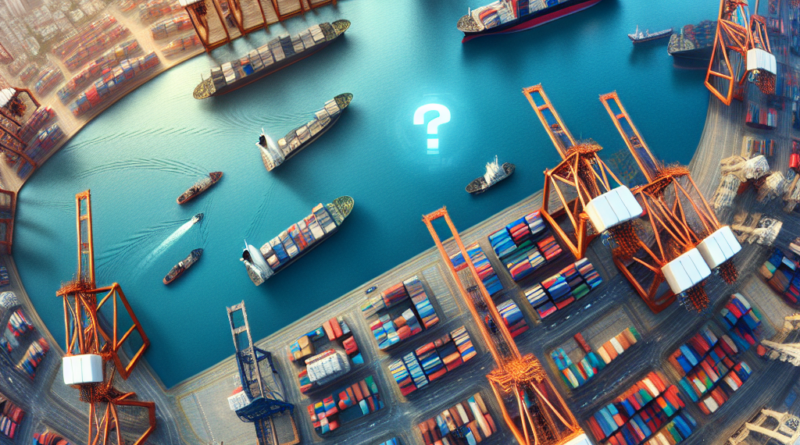Why Prices Could Soar Even Higher: The Answer Lies in Ports
The Ongoing Supply Chain Crisis and Its Impact on Maritime Transport
The supply chain crisis, triggered by the Covid-19 pandemic and exacerbated by the recent geopolitical conflicts, continues to reverberate globally.
As the world grapples with the aftermath of disruptions, maritime transportation faces significant pressures that could further impact prices.
Maersk, the Copenhagen-based container shipping company, has raised the alarm as disruptions in global supply chains, stemming from the actual closure of the Red Sea, have led to severe port congestion in Asia and the Middle East.
This, in turn, has resulted in substantial increases in transport tariffs and poses challenges for the foreseeable future.
Challenges and Prospects for Maritime Trade in 2024
The year 2024 remains uncertain as the normalization of sea trade is still a distant prospect.
With skyrocketing container charter costs, the specter of global inflation looms large, indicating potential price surges in the near term.
Maersk’s recent upward revision of profit forecasts, in response to Houthi militant attacks in the Red Sea, underscores the ongoing disruptions facing shipping companies.
The incidents have forced rerouted journeys towards South Africa, leading to an 80% reduction in container transits through the Suez Canal, as reported by Bloomberg Intelligence.
Current Trends and Implications for Shipping Prices
Maersk has noted signs of further port congestion, particularly in Asia and the Middle East, resulting in price spikes.
The company highlighted robust container market demand as a contributing factor to these challenges.
An essential tool for grasping the situation is represented by key graphs.
The global container index by Drewry, a composite index of all routes, rose by 4% to $4,226 per 40-foot container by May 30, 2024.
Examining specific routes, transport rates from Shanghai to New York surged by 6% to $6,835 per 40-foot container, while Shanghai to Rotterdam rates increased by 5% to $5,270.
Similarly, rates from Shanghai to Genoa saw a 4% hike to $5,693 per 40-foot container.
These trends, if sustained, will inevitably impact commodity prices in the near future.
According to Bloomberg’s analysis, profit expectations must rise for Maersk and the overall liner market.
This shift follows escalating transport rates due to port congestion and an early demand peak resulting from the Red Sea crisis.
The stronghold in prices will persist until vessel traffic can safely resume through the Suez Canal.




